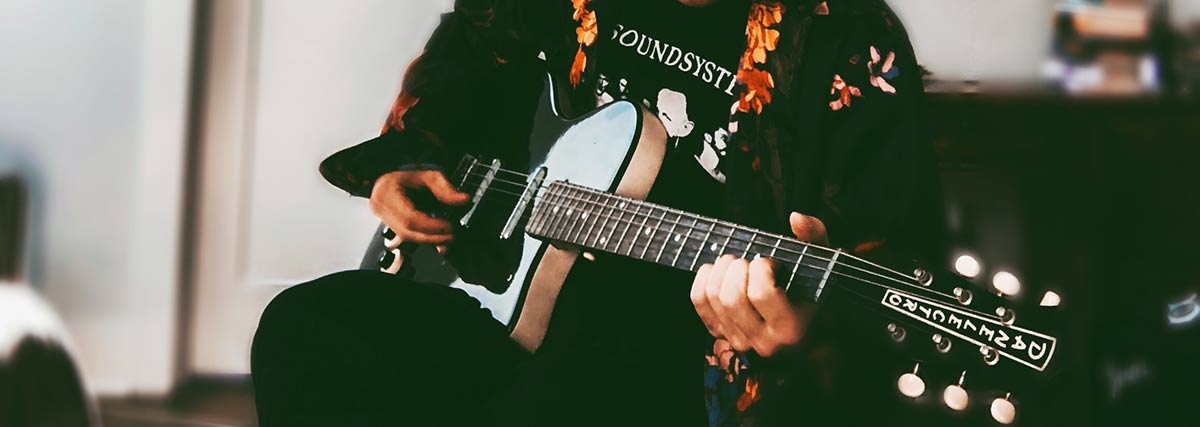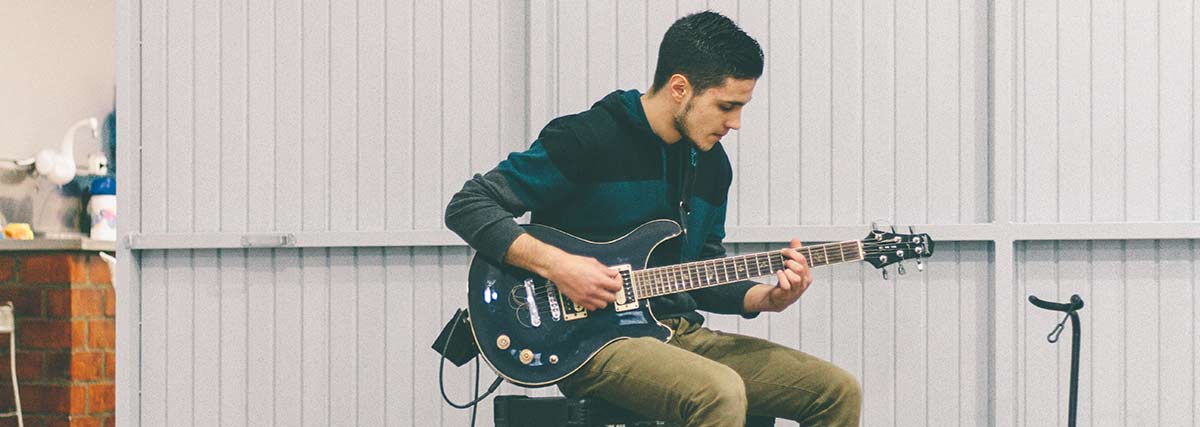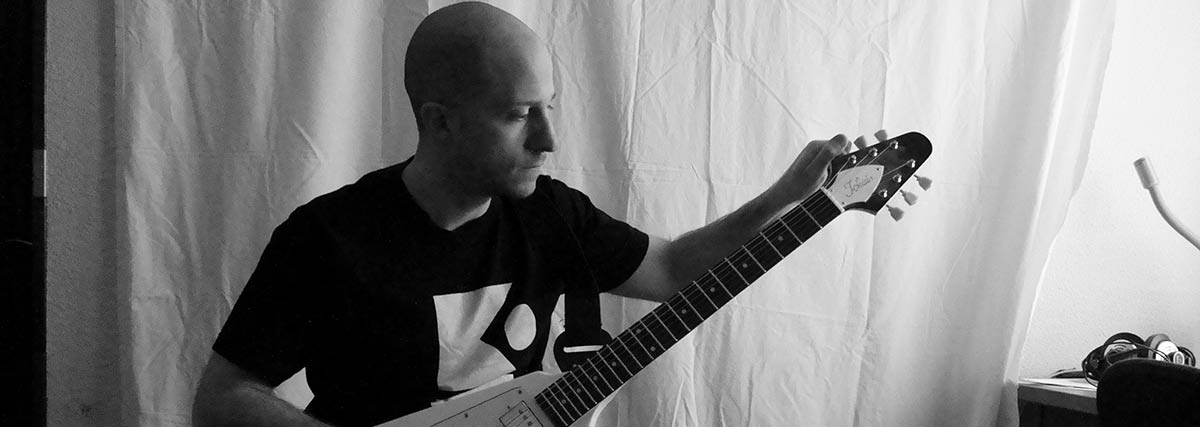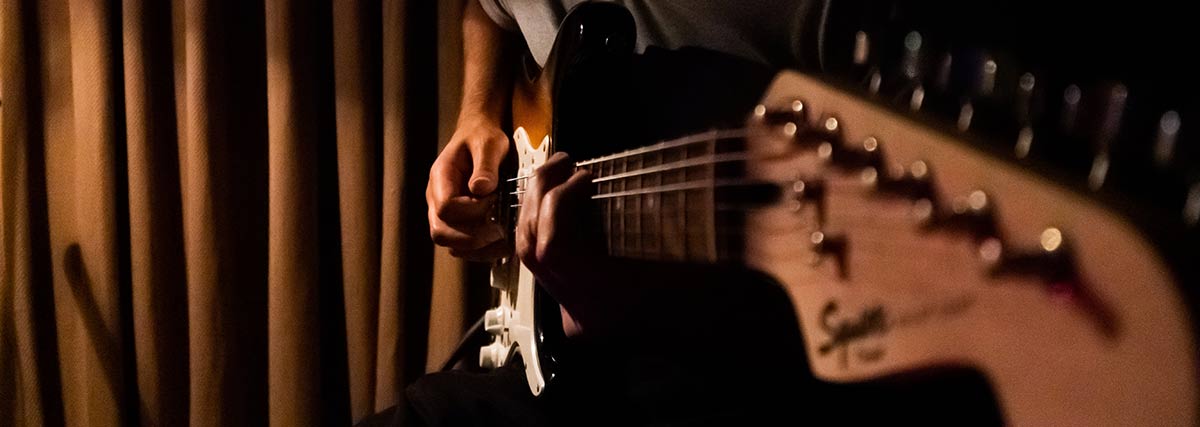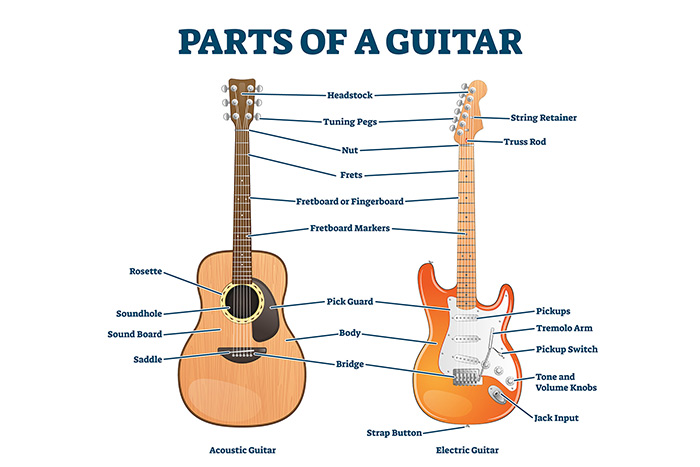It is very common for those guitarists who start out on an acoustic instrument to want to branch out and try something a bit different to see what it’s like on the dark side, and by the dark side we of course mean the electric guitar! There are many factors that will be consistent across both instruments, although there are some differences to keep in mind such as technique, volume, tuning, and the tone of the electric counterpart.
Technique
The first thing to consider when moving to the electric guitar from the acoustic is if you will need to make alterations to your technique. Although there are many different techniques used to play guitar that will change from style to style on both the electric and acoustic, it is important to give some thought as to what technique will be appropriate for the style, or even the particular song that you are trying to play. This will apply more to the strumming/picking hand (right hand if you play right handed) as this can change drastically if you are using a plectrum, fingerpicking, or a hybrid technique of the two. Even within both there are many variations. For example “fingerpicking” could describe traditional classical guitar-style rest stroke technique, or more modern folk fingerpicking which can have many different variations, and can sometimes feel like everyone has their own version of the technique due to the DIY nature of the style.
When using the plectrum there are many different techniques also, such as alternate picking when you strike your pick on the string in a constant down-up motion depending where on the beat the note lands, through to hybrid picking or sweep picking which will require the player to pick in the direction that they are travelling in across the strings to use the least amount of movement, allowing them to increase speed.
How hard you are striking the guitar with the strumming hand is also important to consider. It is common for players that come from a more folk background where they mostly strum chords on the acoustic will attack the electric guitar too hard, treating it the same way as the acoustic. Since the acoustic guitar will typically have heavier gauge strings (meaning they are thicker and have more tension) the player will be able to strum the strings with more force without the notes bouncing out of tune or without breaking a string! Translating this to the electric guitar may cause problems, and will require more finesse if the player is going for a similar strummier or rocky style.
Volume
Moving to an electric guitar after gaining experience on the acoustic will introduce another factor that the player may not be used to – an amplifier! Although acoustic guitars can contain a pickup system that will allow it to be plugged into a PA system, most players would probably spend most of the time with their acoustic unplugged. Moving to an electric instrument that requires being plugged into amplification to sound its best will cause a very different reaction to how it feels to be played, meaning this is something that the player will have to adjust to.
A common mistake that players who are new to the electric guitar will make is that they will turn up their amp too loud because the novelty of having an amplifier is exciting and will make them feel like a rock god! Although this is most definitely fun to do from time to time, having a loud sound launching back at the player will require a lot of confidence on the part that is being played, so if the guitarist is practicing a new piece or technique it may be wise to turn down, as the loud signal can cause hesitation in the attack on the guitar. It is natural as humans to be somewhat shocked by loud and high pitched sounds, so practice at a suitable volume where you can deliver your part with confidence and accuracy.
On the flip side of that coin though is the problem of if the amp is too quiet (although unlikely with electric guitarists!). This will cause the player to attack the guitar with too much force as mentioned above to compensate for the lack of volume to be able to hear themselves, which can lead to bad technical habits causing intonation problems and broken strings.
Tuning
Tuning is a very important part of playing an instrument and unfortunately for us, the electric guitar is not one that can be easy to keep in tune. Even more so than the acoustic, the electric guitar is notorious for its sometimes lack of tuning stability which can be due to its lighter (thinner) gauge strings, the way players will often bend and vibrato notes causing them to fall out of tune, and how hard players can play the instrument especially in a more rock context. This is why guitarists will often have a stomp-box tuner on their pedalboards on the floor of the stage to most likely be used to tune their instrument in-between each song of their set.
The intonation, or tuning, up the guitar neck is also something to consider, as the guitar can never be perfectly in tune all the way up the fretboard due to the nature of its design. Guitarists describe good intonation as when the notes at one end of the fretboard are tuned, to find that the notes up the other end of the fretboard are also in tune. This can be achieved by adjusting the saddles on the bridge of the guitar, making sure the nut of the guitar is correctly compensated for, and that the truss rod down the neck of the guitar is adjusted for accordingly. These are all regular maintenance issues that players will often take to a professional to have looked over, so it may be worth taking your instrument into your local music store or guitar luthier if these sound like issues that you have with your guitar!
Tone
Tone is a major part of playing the electric guitar and will vary depending on the musical style of what you are playing. Where as the acoustic guitar (especially when not plugged in) does not have many tonal variations due to the acoustic nature of the instrument, the electric guitar will differ in that the electronics used in the construction of the instrument will allow the player to alter the sound in many different ways.
A major way that the player can achieve this is by using the controls on the guitar, such as the pickup selector switch, as well as the tone and volume controls. The pickups of the guitar are the magnetic polls that sit underneath the strings on the body of the guitar, and can be different designs depending on the make and model. Guitars can have one, two, three, or sometimes even more pickups to create different variations in tone, as each pickup will bring out different frequencies in the guitar due to how far back or forward it is placed on the body. The pickup selector switch will allow the player to decide which pickup or combination of pickups they would like to choose to achieve the tone that they deem to be appropriate.
The guitar amplifier that the player is using also has a huge impact on the sound of the electric guitar, some would even argue that the amp is even more important than the guitar itself! In the modern day there are many amplifiers available that will be capable of achieving many different tones through the use of amp modelling, which is where the amp will have lots of different sounds replicating various famous amp tones from the last 70 years or so. Some popular tones include Fender sparkly clean tones, Vox AC30 chimey crunch tones, and Marshall distorted rock tones. These are all fantastic sounds and all achieve a different purpose, so it is up to the player to decide when it is appropriate to use which tone.
Tags: Electric guitar, Guitar advice, Guitar tips
